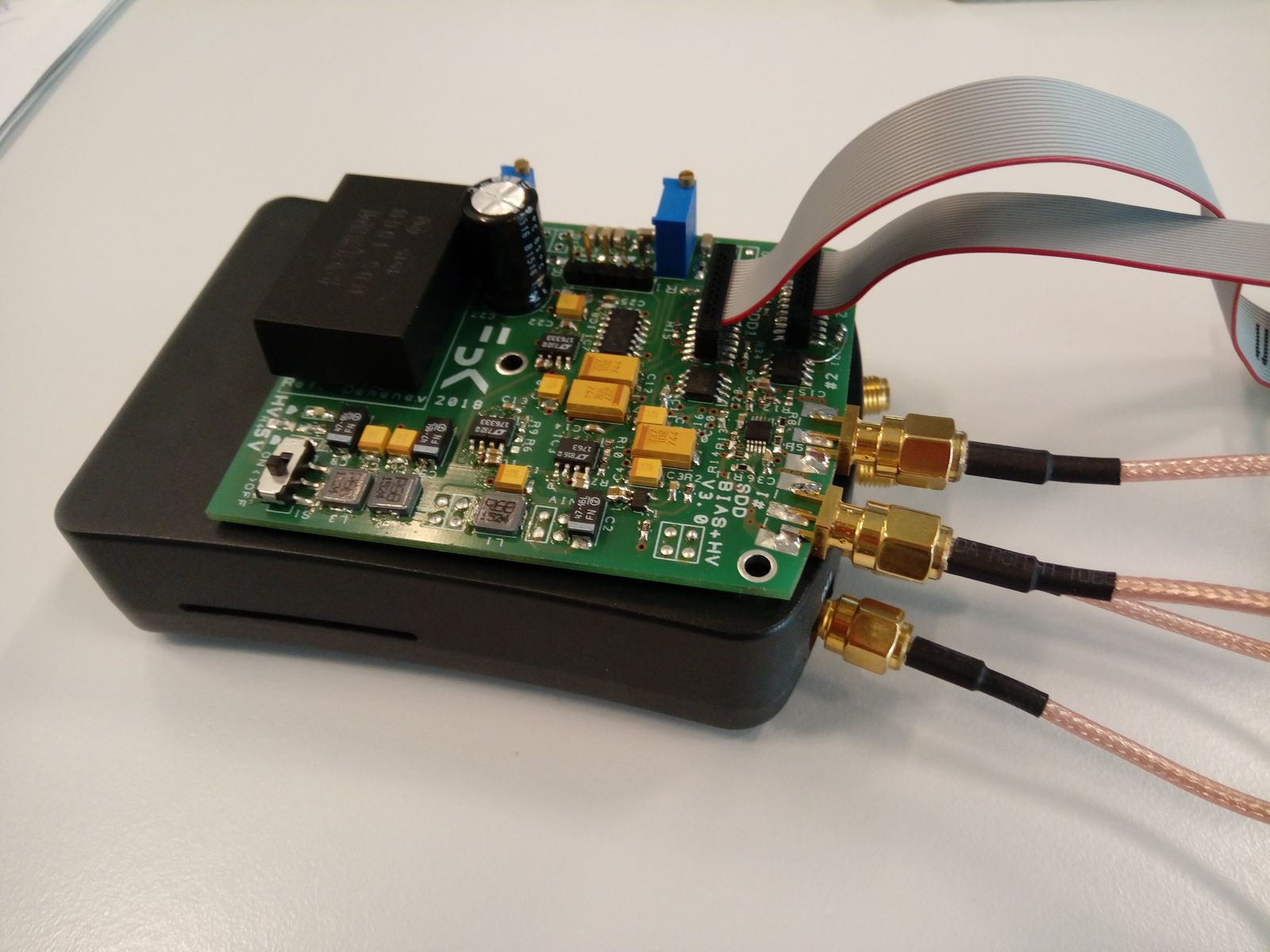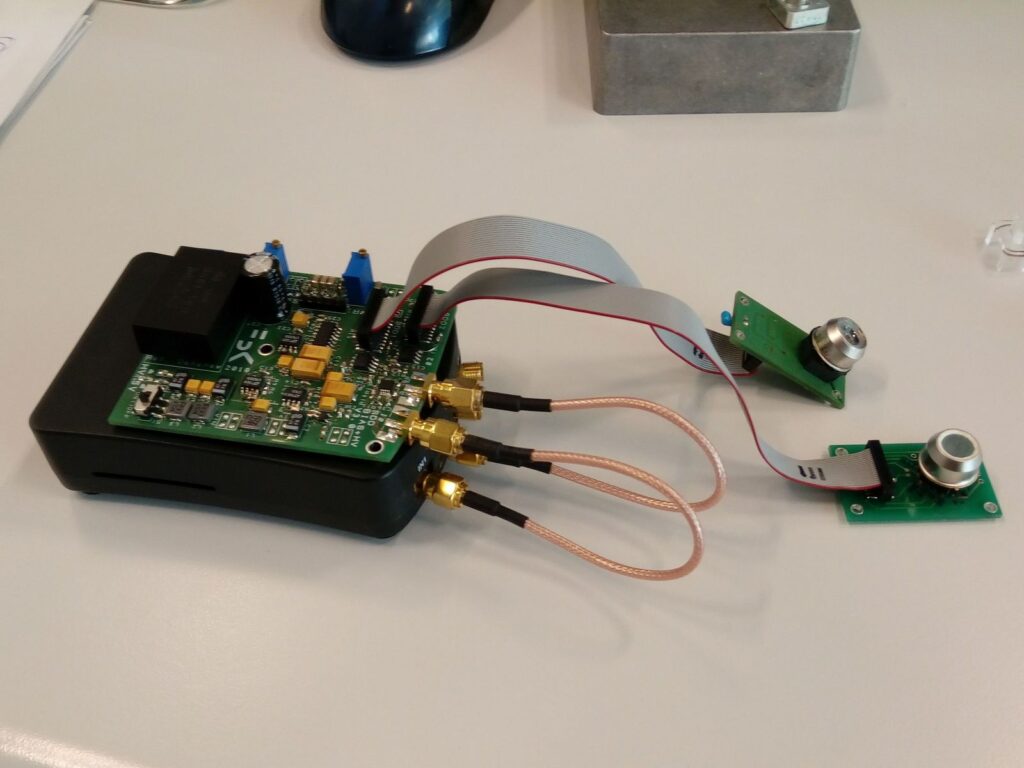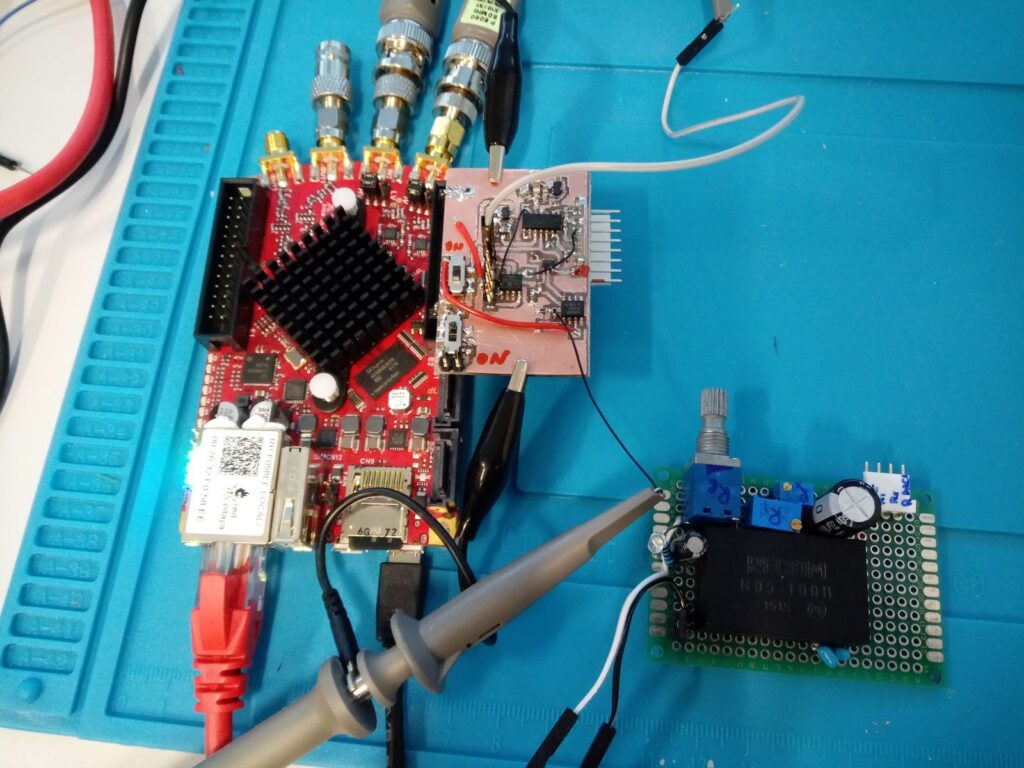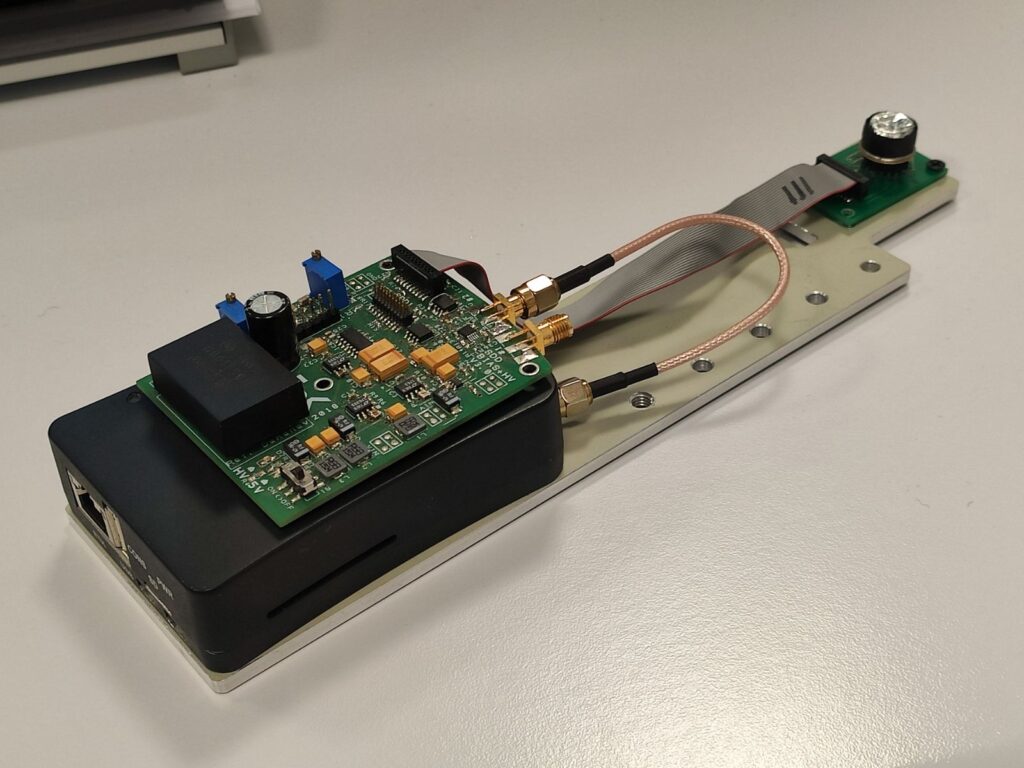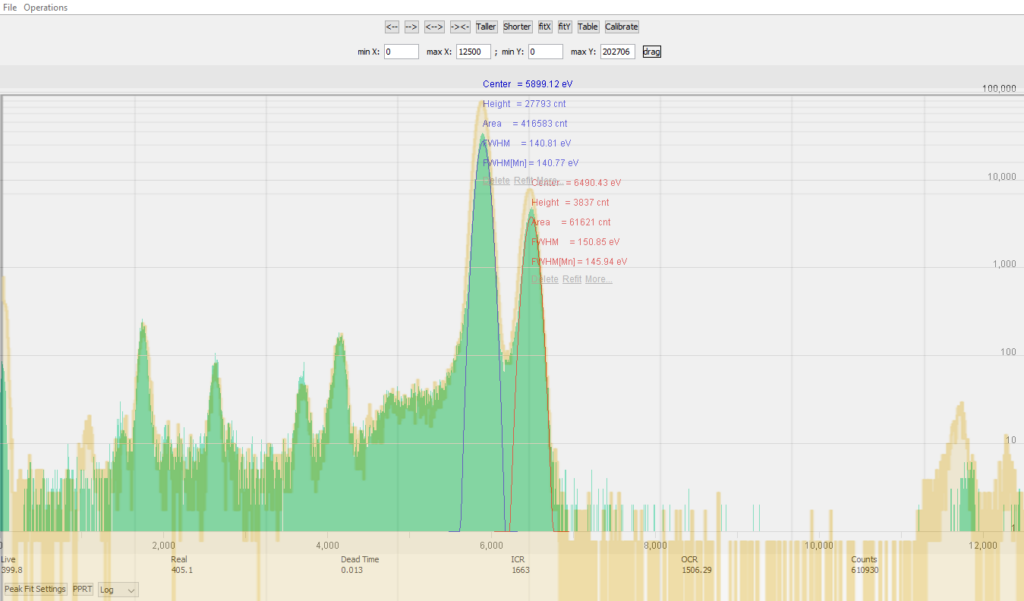Digital Pulse processor based on RedPitaya dev board.
The RedPitaya board is utilized as a real-time signal processor for X-ray spectroscopy applications. It is effectively transformed to enable the registration of two independent X-ray spectra by utilizing both high-speed ADC inputs of the board.
Hardware
The Silicon X-ray sensor is an extremely sensitive device that converts X-ray photons into a cloud of electrons, which are then picked up by an ASIC preamplifier. Due to the high sensitivity of the analog output to noise, designing the power supply block becomes highly demanding. Additionally, the silicon detector requires a clean high voltage biasing potential (around 100V) to operate.
To interface the detector with RedPitaya’s ADC inputs, a dedicated shield has been developed. This shield effectively converts the 3-volt lines available on the extension port into all the required voltages (both high voltage and low voltage) and provides intermediate filtering for the raw signal from the sensor. The filtered signal is then sampled by the board’s ADC, and the digitized signal is processed by the software component of the system
Software
The back-end part of the system utilizes both FPGA and CPU processing. The FPGA processor is responsible for ADC acquisition and low-level data operations. The CPU runs on Linux, where a high-performance algorithm processes the incoming stream of data from the ADC. It extracts the actual events from the signal and calculates the energy of the original photons for each event (implemented in C++).


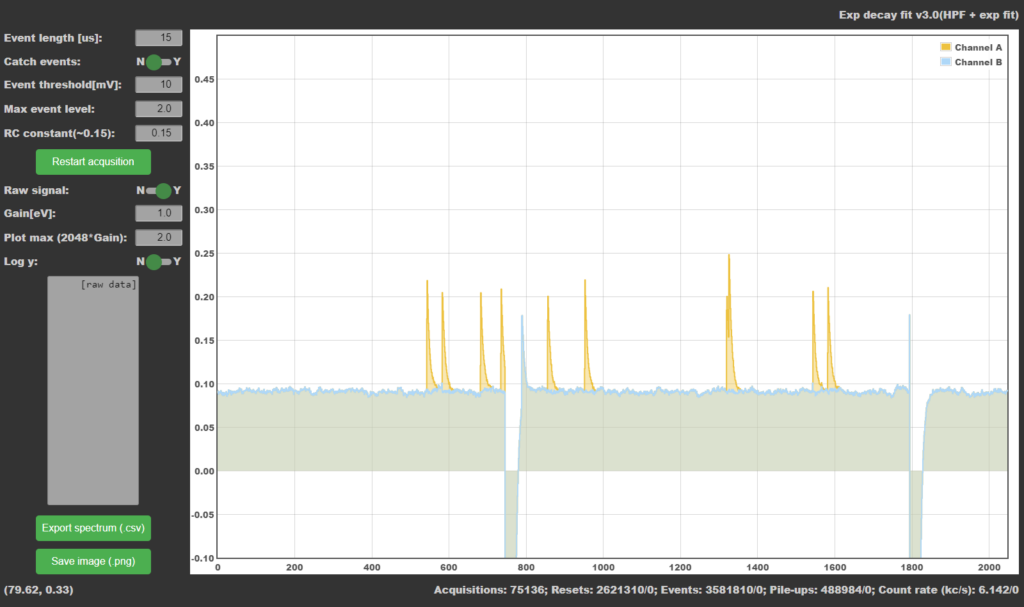
The front-end part is implemented as a web app using HTML, CSS, and JavaScript. The web interface provides the means to control the acquisition process, such as adjusting algorithm parameters, and visualizes the results of the processing (the X-ray spectra).
Conclusion
The system has been developed as a proof-of-concept prototype of a portable spectrometer with low power consumption. In fact, the total power consumption of an instrument based on a single RedPitaya board is an order of magnitude lower compared to current commercial solutions.
Furthermore, when comparing the obtained spectra with those from commercial instruments, no significant differences in resolution were found, making it a viable and cost-effective alternative for X-ray spectroscopy.
Subsequently, this approach was replaced by another concept that utilizes microcontrollers, resulting in even lower power consumption and virtually zero production cost.

